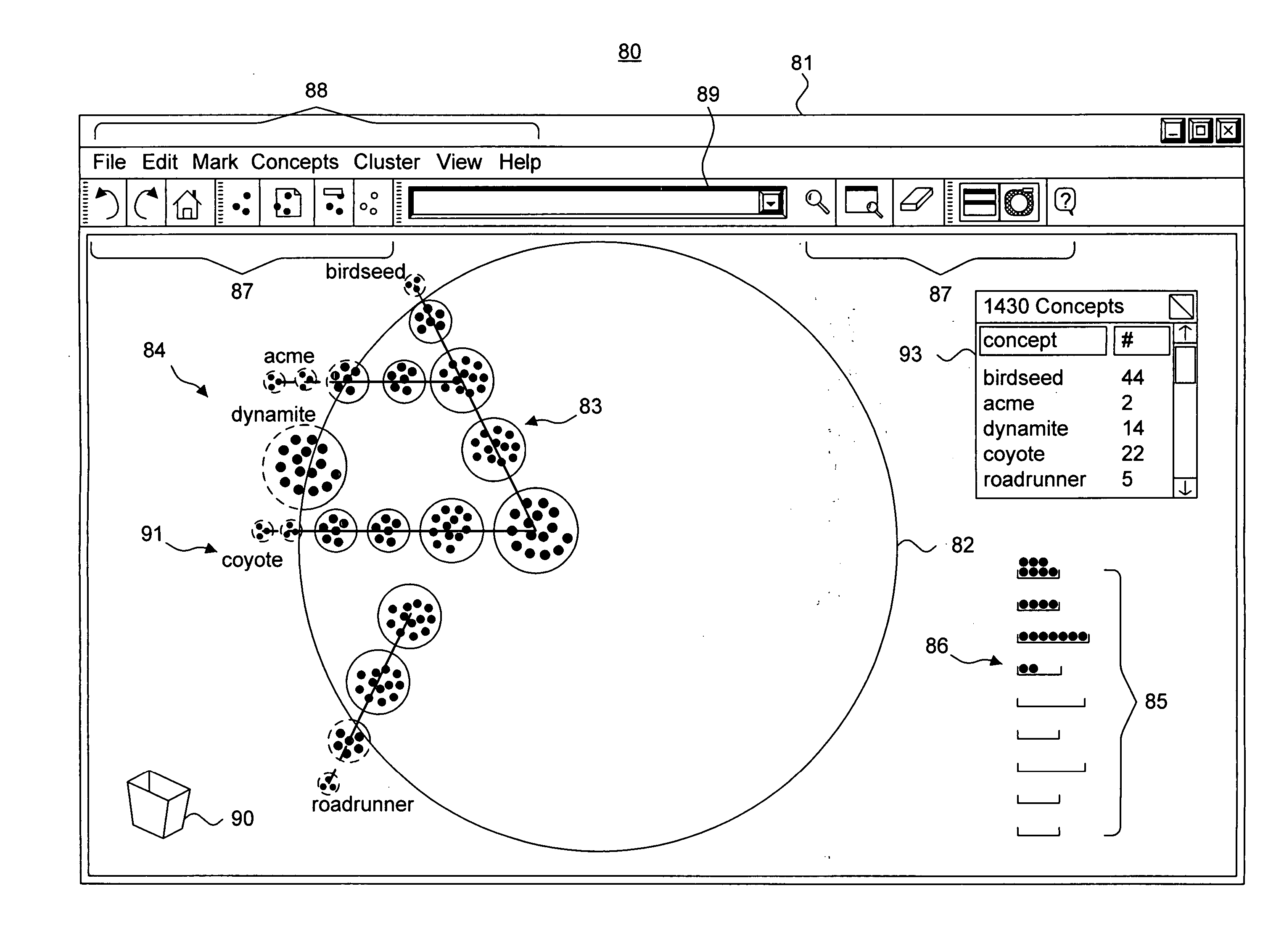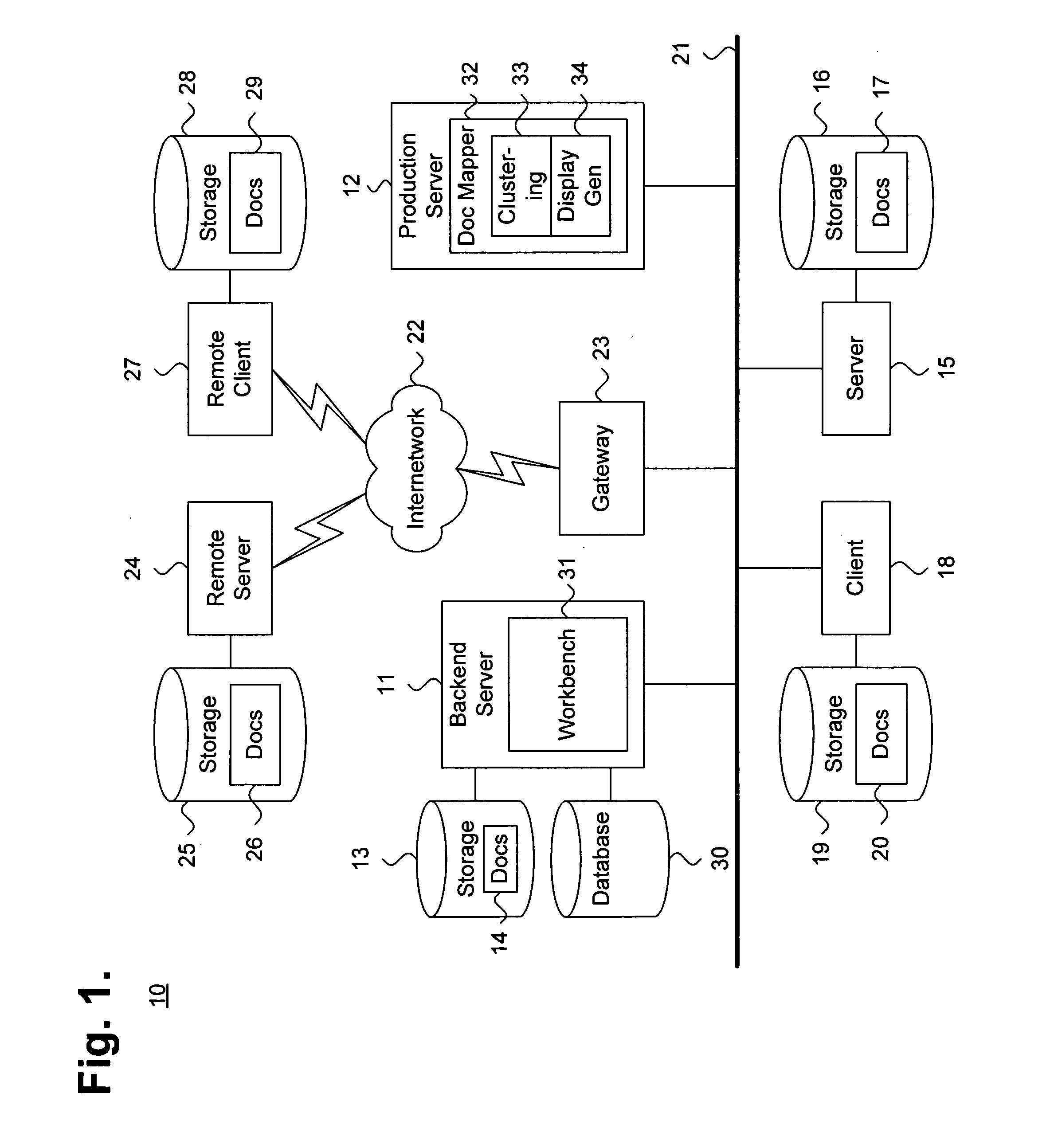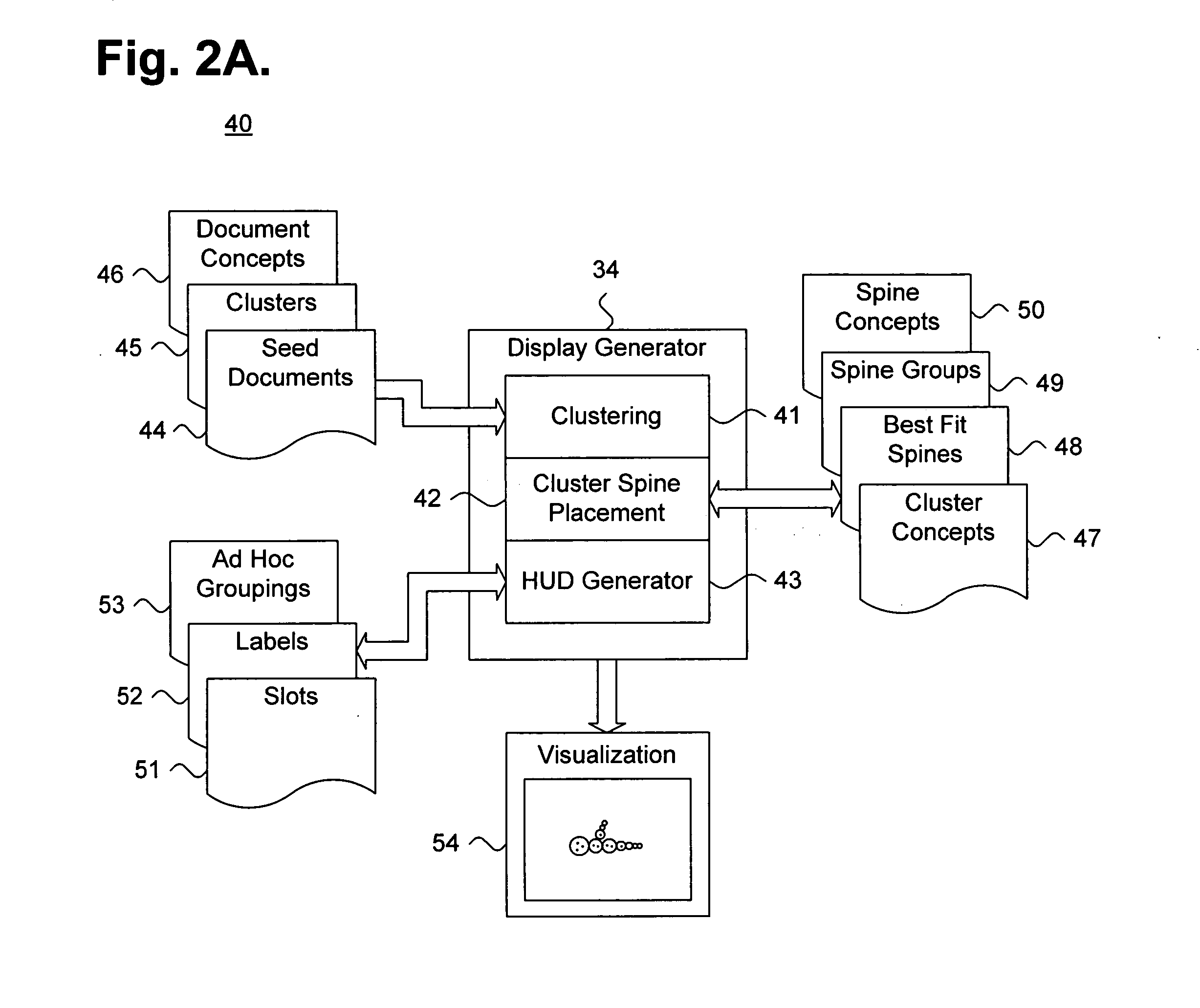System and method for providing a dynamic user interface for a dense three-dimensional scene
a dynamic user interface and dense three-dimensional scene technology, applied in the field of user interfaces, can solve problems such as data misinterpretation, difficult to understand and navigate the screen of densely-packed clusters, and complicate the perception of visualized data
- Summary
- Abstract
- Description
- Claims
- Application Information
AI Technical Summary
Benefits of technology
Problems solved by technology
Method used
Image
Examples
example multiple
Compasses
[0080]FIG. 7 is a data representation diagram 160 showing, by way of example, multiple compasses 161, 162 generated using the user interface 81 of FIGS. 4A-C. Each compass 161, 162 operates independently from any other compass and multiple compasses can 161, 162 be placed in disjunctive, overlapping or concentric configurations to allow the user to emphasize different aspects of the placed cluster spines 124 without panning or zooming. Spine labels for placed cluster spines are generated based on the respective focus of each compass 161, 162. Thus, the placed cluster spines 166 appearing within the focused area of an inner compass 162 situated concentric to an outer compass 161 result in one set of spine labels, while those placed cluster spines 165 appearing within the focused area of the outer compass 161 result in another set of spine labels, which may be different that the inner compass spine labels set. In addition, each compass 161, 162 can be independently resized. O...
example single
and Multiple Compasses
[0081] FIGS. 8A-C are data representation diagrams 170, 180, 190 showing, by way of example, single 171 and multiple compasses 171, 181 generated using the user interface of FIGS. 4A-C. Multiple compasses can be used to show concepts through spine labels concerning those cluster spines appearing within their focus, whereas spine labels for those same concepts may not be otherwise generated. Referring first to FIG. 8A, an outer compass 171 frames four sets of cluster spines 174, 175, 176, 177. Spine labels for only three of the placed cluster spines 175, 176, 177 in the “focused” area 173 are generated and placed along the outer circumference of the outer compass 171. Referring next to FIG. 8B, an inner compass 181 frames the set of cluster spines 174. Spine labels for the placed cluster spines 174 in the “focused” area 182 are generated and placed along the outer circumference of the inner compass 181, even though these spine same labels were not generated and ...
PUM
 Login to View More
Login to View More Abstract
Description
Claims
Application Information
 Login to View More
Login to View More - R&D
- Intellectual Property
- Life Sciences
- Materials
- Tech Scout
- Unparalleled Data Quality
- Higher Quality Content
- 60% Fewer Hallucinations
Browse by: Latest US Patents, China's latest patents, Technical Efficacy Thesaurus, Application Domain, Technology Topic, Popular Technical Reports.
© 2025 PatSnap. All rights reserved.Legal|Privacy policy|Modern Slavery Act Transparency Statement|Sitemap|About US| Contact US: help@patsnap.com



